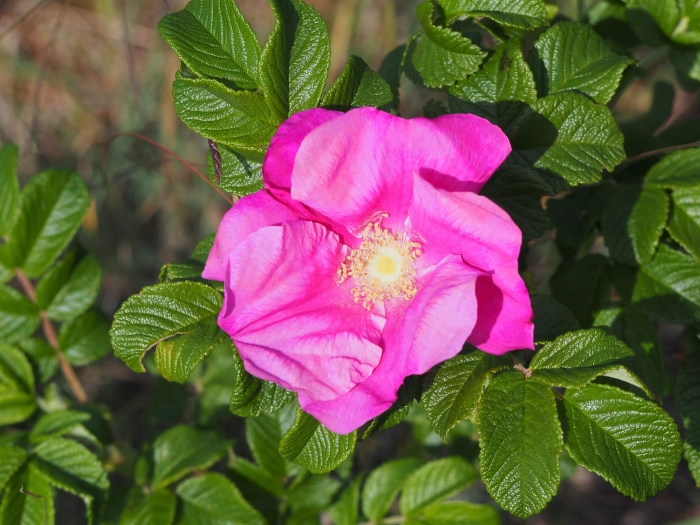Rugosa Rose
(Rosa rugosa)
Rugosa Rose (Rosa rugosa)
/
/

Agnieszka Kwiecień, Nova
CC BY-SA 4.0










































































Estimated Native Range
Summary
Rugosa Rose is valued for its ornamental qualities, including its fragrant flowers, attractive hips, and bright fall foliage. It is a hardy plant, well-suited to urban planting, border planting, and use as a hedge or ground cover, particularly in coastal areas due to its exceptional tolerance to salt spray and storms. It thrives in full sun, requires medium amounts of water, and prefers well-drained soils. While it is disease-resistant and requires minimal maintenance, Rosa rugosa can be invasive when planted outside its native range, spreading aggressively in some regions such as Europe and North America. Gardeners should check local regulations before planting to prevent ecological disruptions.CC BY-SA 4.0
Plant Description
- Plant Type: Shrub
- Height: 4-6 feet
- Width: 4-6 feet
- Growth Rate: Moderate
- Flower Color: Pink, White
- Flowering Season: Spring, Summer, Fall
- Leaf Retention: Deciduous
Growth Requirements
- Sun: Full Sun, Part Shade
- Water: Medium
- Drainage: Fast, Medium
Common Uses
Bank Stabilization, Bee Garden, Bird Garden, Border Plant, Butterfly Garden, Drought Tolerant, Edible*Disclaimer: Easyscape's listed plant edibility is for informational use. Always verify the safety and proper identification of any plant before consumption., Erosion Control, Fragrant, Hedges, Salt Tolerant, Showy Flowers, Street Planting
Natural Habitat
Coastal sand dunes and sea shores
Other Names
Common Names: Japanese Rose , Turkestan Rose , Rugose Rose , Beach Rose , Ramanas Rose , Letchberry , Saltspray Rose , Wrinkled Rose , Rynket Rose , Kartoffel-Rose
Scientific Names: Rosa rugosa , Rosa cinnamomea , Rosa ferox , Rosa rugosa var. kamtschatica , Rosa kamtchatica , Rosa rugosa f. plena , Rosa regeliana , Rosa pubescens , Rosa rugosa var. plena , Rosa rugosa var. rubra
GBIF Accepted Name: Rosa rugosa Thunb.